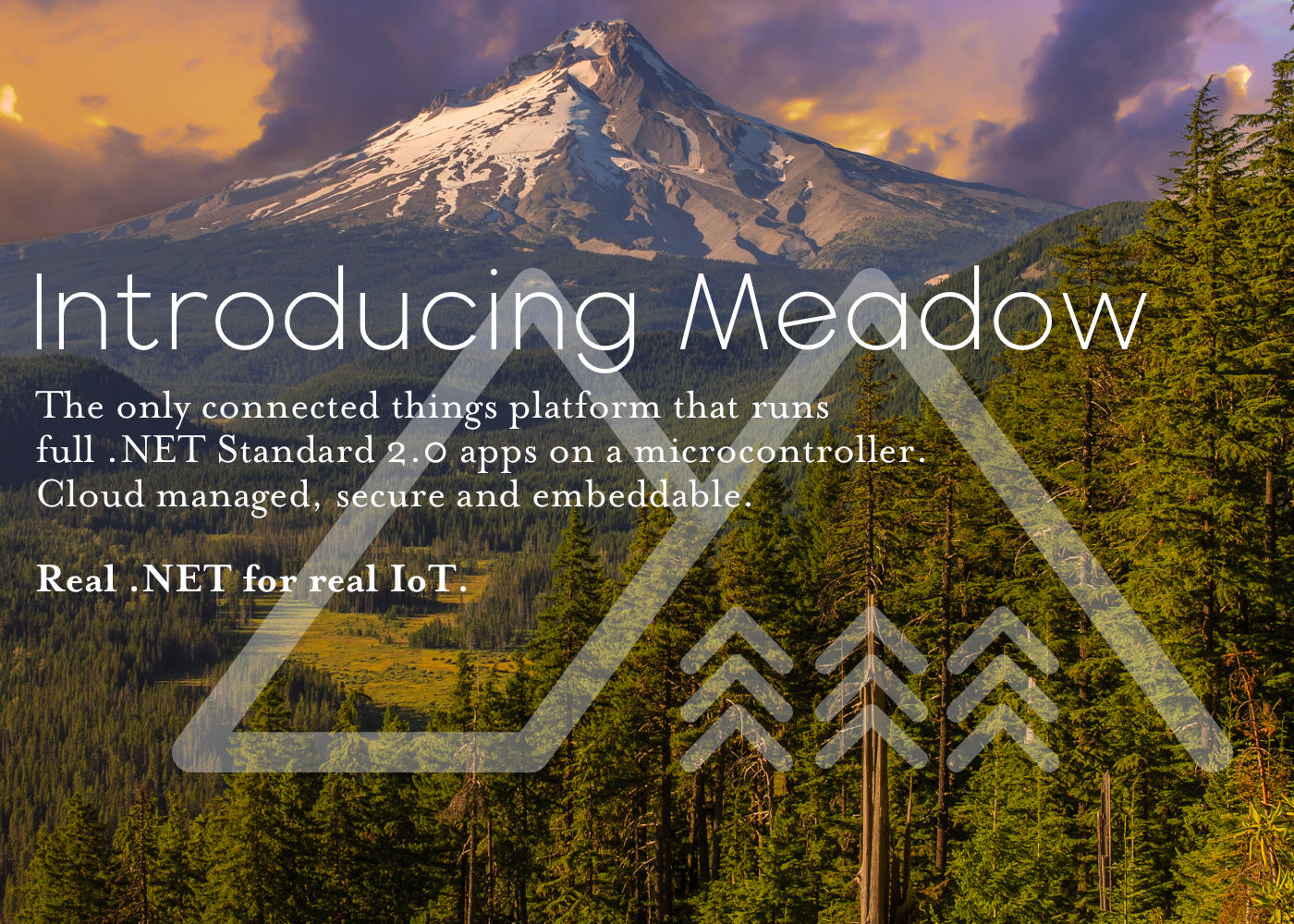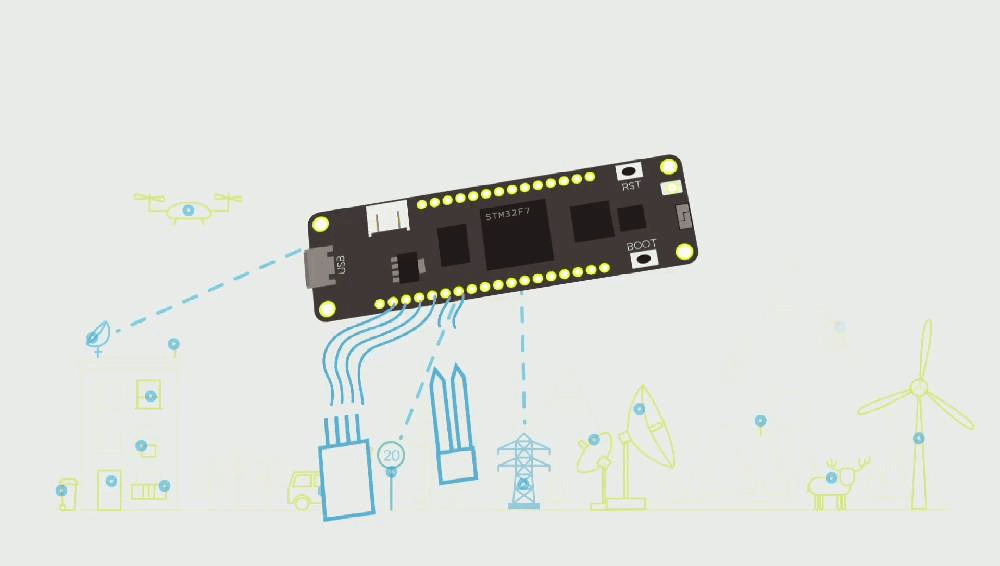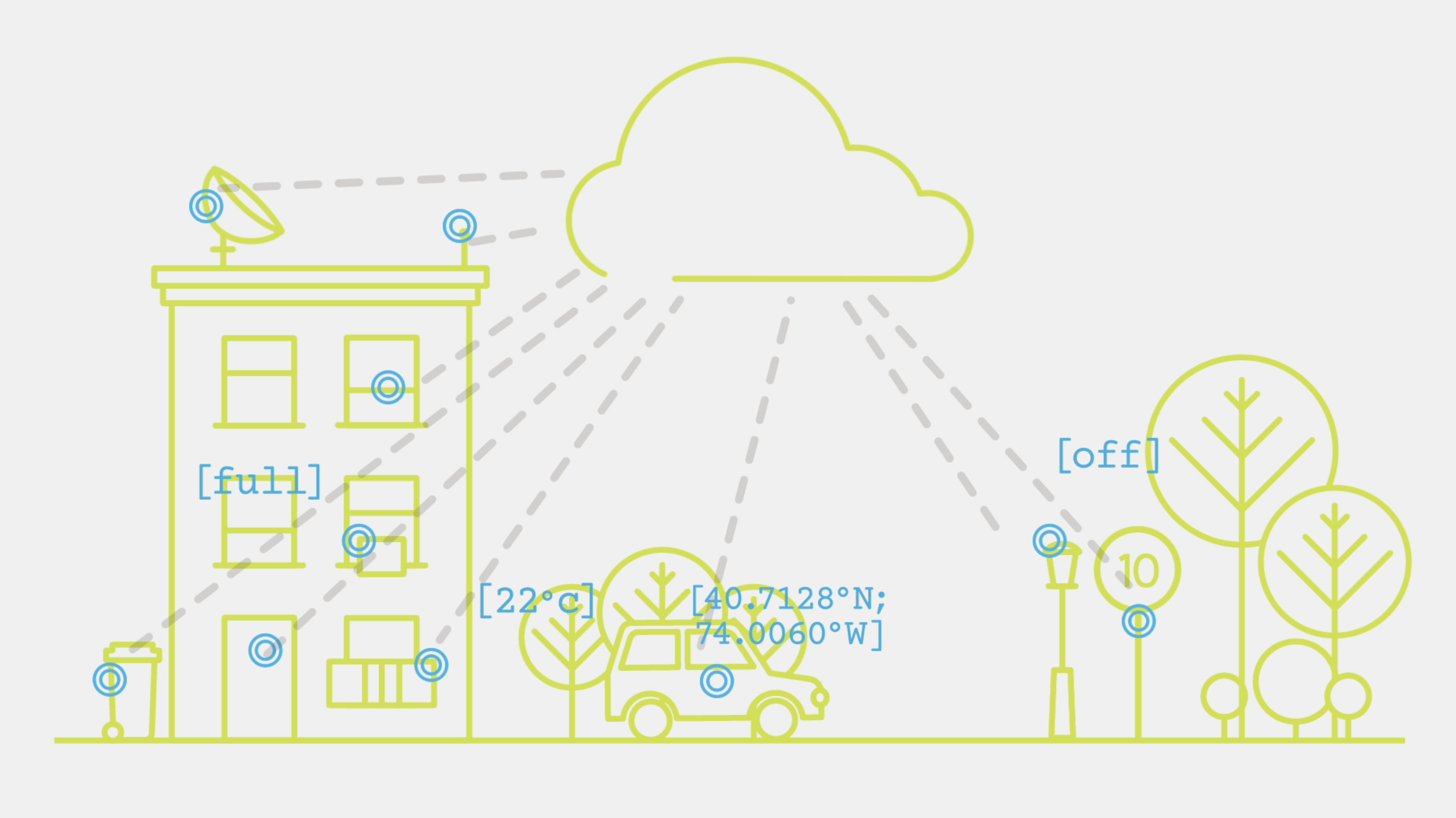Let the Revolution Begin: Introducing Meadow

Building connected things is about to get a whole lot easier.
The hardware revolution is nearly upon us. A decade of rapid development and mass production of mobile technologies has created a new class of hardware components that are low-energy, super powerful, connected, and commodity-cheap. And the future hardware of connected things is unquestionably going to be powered by commodity microcontrollers.
However, microcontroller development hasn’t changed much since the ’80s; most development is still done in low-level languages such as C/C++ or variants like Wiring (the Arduino IDE language). And while players like Particle have added over the air update support and LTE connectivity, their developer story hasn’t deviated much from Arduino.
Truly sophisticated experiences are still practically out of reach for nearly all but the most technically sophisticated and well-funded teams out there; and the solutions that have been built are nearly unmaintainable, brittle, and largely insecure.
We are about to change that.
We have been working for two years on a new approach to hardware development, and we’re finally ready to share it with you.
Introducing Meadow

Meadow is the world’s first modern IoT development platform for professional developers. It’s a secure, cloud-managed, connected things platform that runs full .NET Standard 2.x applications (via Mono) on a microcontroller.
But Meadow is more than that. It includes a developer framework that takes a radical new approach to IoT hardware and solutions.
Plug and Play Hardware Development
With a massive peripheral driver library and hardware APIs, Meadow enables a plug and play hardware development experience by removing much of the complexity and plumbing of building hardware solutions.
With Meadow’s beautiful foundation APIs, you can piece together different hardware peripherals as if they were meant to work together seamlessly.

using Meadow;
…
var tempSensor = new AnalogTemperatureSensor(Pins.D1);
var lcd = new Lcd2004();
temp.NotificationThreshold = 0.5f;
temp.TemperatureChanged += (s, e) => {
lcd.WriteLine(
“Temp: “ + e.Temperature.ToString(“n1”), 0);
}
Embeddable Everywhere

Meadow is designed to be embeddable everywhere. Because it runs on a microcontroller, it uses so little energy that it can be powered by a coin battery for years, or work indefinitely with a small solar cell or Power Over Ethernet (POE).
Secure, Over-the-Air (OtA) Updates
Additionally, Meadow applications can be updated securely over the air, further enabling them to be installed virtually anywhere, opening new possibilities for modern IoT applications and enabling devices to be managed in the field.

STM32F7 Based Development Board
We’ve designed Meadow to run on a variety of microcontrollers, and our first developer board is based on the STM32F7 chip. The F7 line is the successor to the F4, which powers Netduino, and has twice the power, yet uses half the energy. The F7 also includes a number of interesting features such as a built in JPEG codec for handling camera and video streams, as well as a 2D graphics accelerator for providing UX on a variety of screens.
And best yet, the Meadow F7 board is Adafruit Feather compatible, with built in LiPo/LiIon battery charging, so you can easily run it from a battery, and even provide charging from a solar panel.

The Meadow F7 board is also packed with I/O, including 15 digital I/O ports (each with PWM), 5 Analog in ports, and includes SPI, I2C, CAN, Serial, and more! It also has onboard WiFi, Bluetooth Low Energy (BLE), and sports 32MB of flash and and 16MB of RAM.
Meadow is a new way to build IoT.
Meadow isn’t another Arduino clone. It’s a whole new way to build IoT. From prototype to production, Meadow is going to make building connected things a whole lot better. With Meadow, get ready to build things that used to be impractical!
Stay Tuned
Can’t wait for one? Sign up for our newsletter to keep up to date on Meadow, and be the first to be able to purchase a Meadow F7 board.


